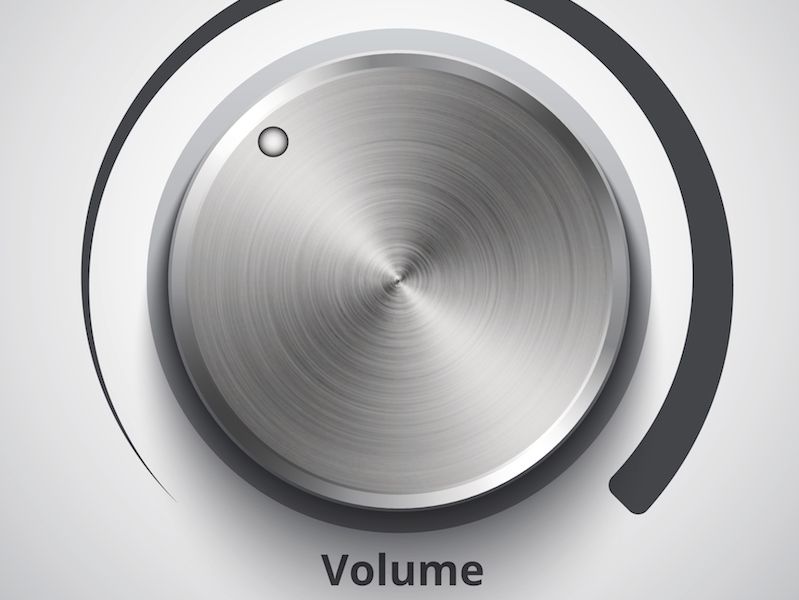
Have you ever noticed the “Beware of Sharks” sign when you’re at the ocean? It’s not exactly a warning you ignore. A sign like that (especially if written in huge, red letters) might even make you reconsider your swim altogether. But people usually don’t heed warnings about their hearing in the same way for some reason.
Current research has found that millions of individuals disregard warning signs regarding their hearing (this research specifically looked at populations in the UK, but there’s no doubt the problem is more global than that). Part of the issue is knowledge. It’s fairly intuitive to be scared of sharks. But being scared of loud noise? And the real question is, what’s too loud?
Loud And Hazardous Sound is All Around us
Your ears are not just in peril at a rock concert or on the floor of a machine shop (not to minimize the hearing hazards of these situations). Many every-day sounds can be hazardous. That’s because it isn’t exclusively the volume of a sound that presents a danger; it’s also how long you’re exposed. Even low-level sounds, including dense city traffic, can be dangerous to your ears if you are exposed for more than a couple of hours.
Broadly speaking, here’s a rough outline of when loud becomes too loud:
- 30 dB: This is the sound level you would find in everyday conversation. At this level, there won’t be any limit to how long you can safely be exposed.
- 80 – 85 dB: An air conditioner, heavy traffic, and a lawnmower are at this level of sound. After around two hours this level of sound becomes dangerous.
- 90 – 95 dB: Think of the noisiness of a motorcycle. 50 minutes is enough to be dangerous at this volume.
- 100 dB: An oncoming subway train or a mid-sized sporting event are at this volume (depending on the city, of course). 15 minutes of exposure will be enough to be dangerous at this volume.
- 110 dB: Have you ever cranked your Spotify music up to ten? That’s normally around this volume on most smartphones. This level of exposure is dangerous after only 5 minutes of exposure.
- 120 dB and over: Immediate pain and damage can happen at or above this volume (think about an arena sized sporting event or rock concert).
What Does 85 Decibels Sound Like?
Broadly speaking, you should consider anything 85 dB or louder as putting your hearing in danger. The problem is that it isn’t always clear just how loud 85 dB is. It’s not tangible the way that a shark is tangible.
And that’s one of the reasons why hearing warnings frequently go ignored, specifically when the sound environment isn’t loud enough to cause pain. There are a couple of possible solutions to this:
- Sufficient training and signage: This particularly refers to workspaces. The significant risks of hearing loss can be reinforced by training and sufficient signage (and the benefits of protecting your hearing). Signage could also make it clear just how loud your workplace is. Helping employees know when hearing protection is recommended or necessary with proper training can be really helpful.
- Get an app: Your hearing can’t be directly protected with an app. But there are several free apps that can work as sound level monitors. It’s difficult to judge what 85 dB feels like so your hearing can be injured without you even knowing it. Making use of this app to keep track of sound levels, then, is the solution. This will help you establish a sense for when you’re going into the “danger zone” (Or, the app will simply alert you to when things get too noisy).
When in Doubt: Protect
No signage or app will ever be 100%. So when in doubt, take the time to protect your hearing. Over a long enough period of time, noise damage will almost definitely create hearing issues. And nowadays, it’s never been easier to damage your ears (it’s a simple matter of listening to your music too loudly).
You shouldn’t increase the volume past mid way, particularly if you’re listening all day. You need noise blocking headphones if you are constantly cranking up the volume to cover up background sound.
That’s the reason why it’s more essential than ever to identify when loud becomes too loud. And to do this, you need to raise your own recognition and knowledge level. Safeguarding your ears, using ear protection, or limiting your exposure, is pretty simple. But you have to recognize when to do it.
That should be easier these days, too. Particularly now that you understand what to look for.
Think you might have hearing loss? Schedule an exam.
